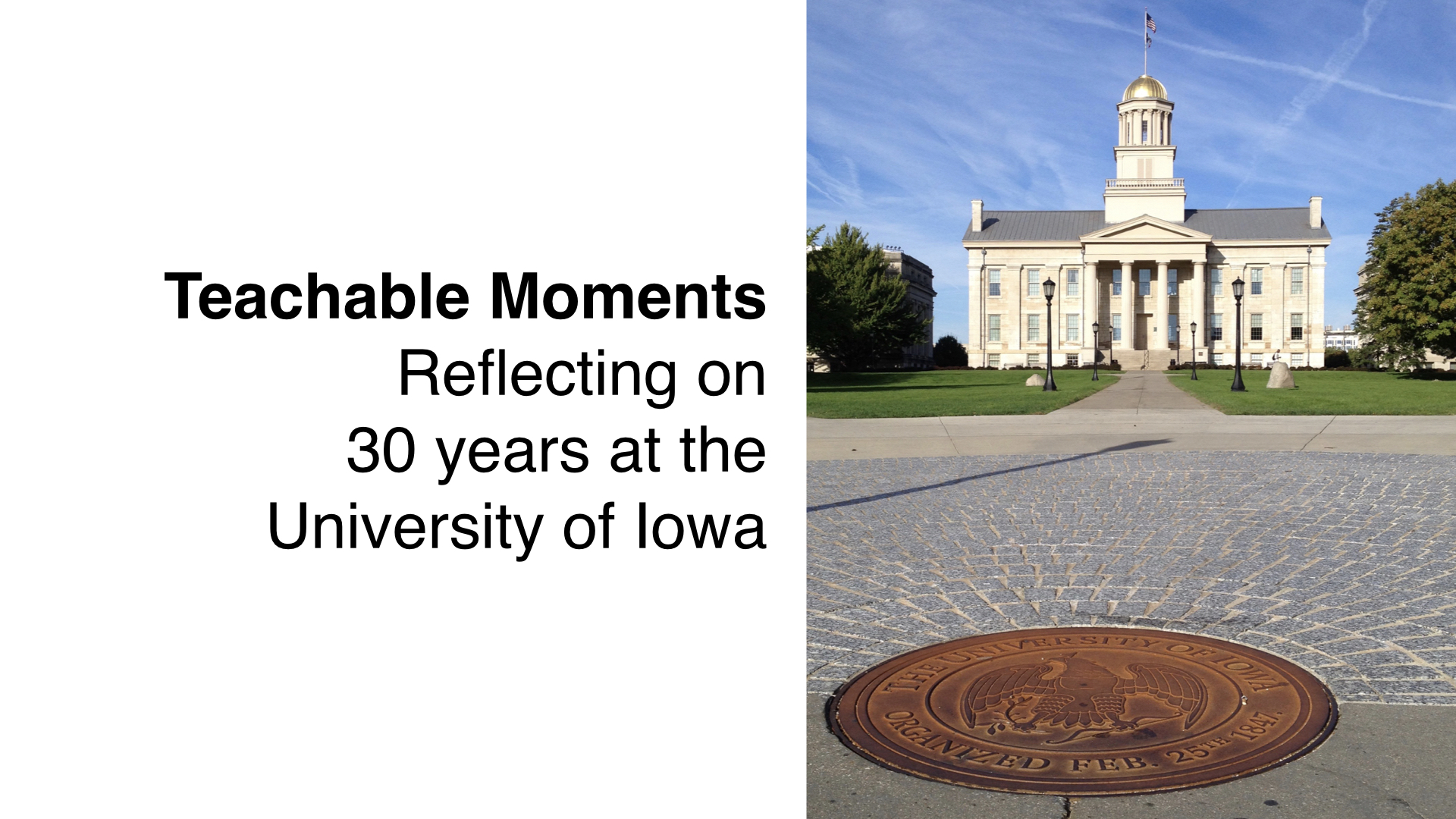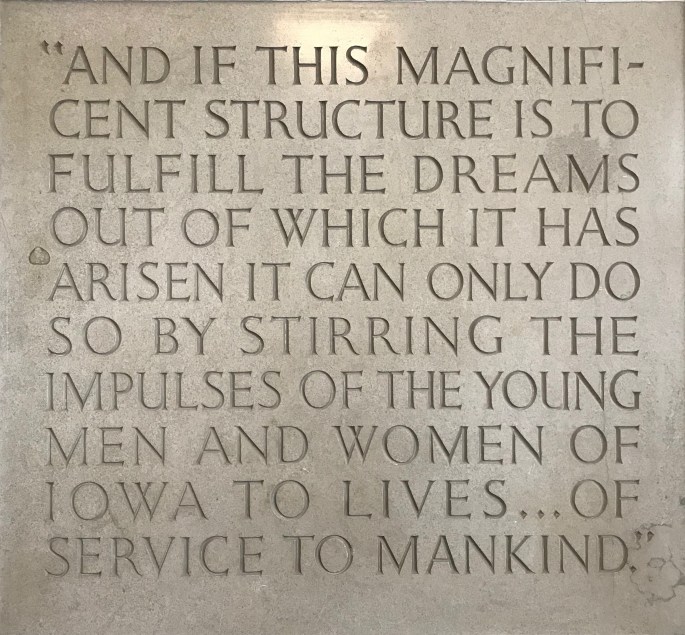I’ve had many cars over my lifetime, and learned a bit from each one. Most were purchased used. Some were purchased new or leased. Some were 10 to 20 years old. I’ve had cars from Toyota, Honda, Ford, Chevy, and other brands. I’ve also lived without a car for many years, choosing to use public transit, pay for a taxi, ride a bike, walk, or rent a car whenever needed.
I want to share from my experience so that others can benefit and be better guided to the car that best fits their needs.
Long Search for the Perfect Vehicle
My first “perfect” vehicle was a 1991 Geo Metro with a 3-cylinder engine and over 40 MPG fuel efficiency. It was $10,000 purchased new. I drove that car for over 10 years and 220,000 miles. It was a 4-door hatch back. So, it had seating for four, but also plenty of storage with the rear seats folded down. The front-wheel drive and good ground clearance allowed it to perform well in Iowa winters. The ultra-compact size made it very easy to park. I’ve occasionally considered purchasing a present-day ultra-compact car.
Vehicles similar to the Geo Metro are available today for about $16,000 such as the and Nissan Versa and Mitsubishi Mirage. These are very appealing cars because you get 90% of the features and functions of a car costing much more, and the additional benefits mentioned above including 40-43 MPG fuel efficiency.
With my work requiring hauling of equipment, and needing to accommodate four passengers with luggage for road trips, I began searching for the perfect vehicle for my current needs. The on-call support services I offer require that I be able to travel at any time. I often need to travel in inclement weather. So, I needed a vehicle that could provide that reliability.
As you’ll read below, my search spanned over about 20 years and many vehicles. The vehicle I was searching for didn’t exist until 2018 when Subaru began selling the Ascent, a slightly larger version of the Forester. I waited a year, and purchased the 2019 Ascent. After about a year, I dedicated an entire podcast episode to the Ascent. [Podcast Episode #45 — Listen on Spotify]
If you want to purchase one vehicle for long-term ownership that will accommodate your changing vehicle needs over decades, the Ascent would be a good choice. It has 5,000 pounds towing capacity, seating for 6 or 7 people, but also the fuel efficiency of a 4-cylinder engine. The extra horsepower, when not used for pulling 5,000 pounds, makes merging into highway traffic a breeze. If you are leasing or buying and selling every few years, it could be a costly vehicle to own. The greatest value is in long-term ownership.
The rest of this document describes some context and other insights from my vehicle ownership experiences.
Status Symbol
If you’re buying a car as a status symbol, the car you choose really depends on where you live and who you are trying to impress.
Ideal status symbol vehicles depend on context. In a rural area, having a Ford F150 does not necessarily convey prestige or luxury, but it does allow a person to “fit in” with other vehicle owners which is a kind of status.
There are some social circles where an Audi, BMW, Lexus, or Mercedes, in a lower-trim would be the “blend in” car. We think of a status symbol as an attempt to convey superiority or greater than average success. Yet, even the ground floor of status that conveys “I’m like you” is a certain status.
I live in a college town where it’s expected that people will make informed, intelligent, frugal purchases. For the six-figure income people I know, who clearly aren’t restrained by a budget, they also purchase the most practical and economical vehicle that fits their needs. They don’t buy new. They buy used vehicles of about 3 year old with 36,000 miles. The Toyota Camera or Toyota Corolla have always been popular choices for used vehicles. Buying new guarantees a dramatic drop in a person’s net worth, similar to what a market crash does to a retirement fund. So, smart shoppers buy used.
This is consistent with Warrant Buffet’s car buying advice and practice: “Warren Buffett’s choice of cars is just one example of how his philosophy of prioritizing value over social status can help individuals achieve financial success and maintain a fulfilling lifestyle.” [Source]
I like to complement people’s cars with a sincere comment. If I notice someone has a newer vehicle, I might say, “Did you get a new car? That’s nice.” Most people appreciate that, and the immediate response is usually, “It’s new to me. I got it used.” People want to avoid being perceived as wasteful or buying a new car to impress others.
In my town, those who buy new cars are considered chumps and suckers who are wasteful and have a desire to impress others. However, in Beverly Hills, a new car might be viewed positively. So, there’s no universal single car that’s going to impress others.
With cars, clothing, or other material things, it’s best not to worry about what people will think about your purchase and instead, as Warren Buffet advises, prioritize value over social status.
My Current Vehicle
The car I’m currently driving is a Subaru Ascent. It looks new, but it is actually 4 years old, going on 5 this summer. Its like-new appearance is due to parking indoors and keeping it washed when needed. I only drive it about 7,000 miles per year, despite using it for a few long road trips and my business.
I’m a bit self-conscious about looking like I’m driving a new car, for the reasons mentioned above. I’m not the kind of person who drives a newish looking car to impress others. Someone recently asked me, “What would a car like this cost?” I explained that it’s sort of embarrassing to be driving a somewhat fancy car instead of a used Toyota Corolla which would seem to be the more practical and frugal choice.
In the United States, the current average car price is about $48,000. The entire line of six SUV-style vehicles from Subaru cost between $25,000 and $44,000 for the base models. The Ascent has a base price of about $34,000.
Subaru tends to be an economical choice, known for reliability, long lifespans, and holding their value. For that reason, a used Subaru can be almost as expensive as new models. You can pay a little more and get something new, with better safety features, quieter ride, improved fuel efficiency, and a warranty.
The Subaru Ascent has a similar appearance to the Subaru Forester, but is slightly larger.
For longer road trips, with four people, plenty of luggage, and other travel items, the Ascent has enough room so roof-mount storage isn’t needed. As a business vehicle, the Ascent has a third row of seating that folds down to accommodate larger items.
As a company, Subaru is known for partnering with numerous non-profit organizations with an emphasis on parks, sustainability, and causes that appeal to traditionally progressive-minded people. So, Subaru vehicles are more socially accepted in some circles.
Subaru Forester
As mentioned above, my previous vehicle was a Subaru Forester — a 2016 model.
There is much about the Forester that I prefer over the Ascent. If a person doesn’t need the extra row of seating and cargo area of the Ascent, the Forester is really a much better choice of vehicle due to:
- The lower cost at $27K (Forester) vs $34K (Ascent)
- Improved fuel efficiency of 33 mpg highway compared to 26 mpg highway for the Ascent
- Lighter weight of 3,600 pounds compared to 4,590 pounds for the Ascent
- Smaller size for easier parking
From a distance, visually the vehicles look the same. I drove a Subaru Forester for many years and really liked it.
For my work and needs, having the extra space of the Ascent became a requirement. Also, the Ascent has X-Mode which provides better traction and control on ice and snow. For winter driving, the Forester was an improvement over the Honda CRV. However, the Ascent with X-Mode proved to be worth the upgrade.
Honda CRV
Prior to the Subaru Forester, I had a 2013 Honda CRV. It was one of the first all-wheel-drive vehicles I owned, and I appreciated the improved traction compared to the front-wheel-drive Toyota Corolla that I’d owned previously.
The Honda CRV more storage capacity than the Corolla. The hatch back and folding back row seats created flexibility for hauling large equipment.
Toyota Corolla
The Toyota Corolla replaced the Geo Metro. It had safety and reliability, with a relatively low price. Today a Corolla has a price of about $22,000.
As a sedan, I found that it was low to the ground and as a result had slightly limited visibility. The small deep-well trunk wasn’t as convenient for hauling equipment. For the price, it allowed me to have a reliable car for my work.
Used Vehicles
Most of my previous vehicles were used. There’s a perception of savings and value with a used car. What I found is that the maintenance, repairs, and occasional breakdowns became costly. Sometimes there would be a repair bill of over $1,000 in a month. That would be $1,000 that wasn’t invested in a CD and earning interest. It wasn’t $1,000 that increased the value of the car. It was $1,000 spent, and I would still just have an old unreliable car that I couldn’t really rely on and feel confident with.
On one occasion, I was driving an older car and went over a small bump in the road. The axel and suspension completely collapsed, perhaps from rust, and the vehicle fell to the street. I’ve had breaks go out, clutches stop working, engines fail, electrical systems stop working, and many other expensive breakdowns.
To offset the unreliable nature of the used cars I had, I would sometimes rent a car for longer road trips. That provided greater reliability and less worry.
Prior to purchasing the Geo Metro in 1991 for about $10,000 new, I was driving a 1970s Pontiac with a V8 engine. That car would get about 12 miles per gallon. Some point along the way, I had a very old Cadillac that had about the same fuel efficiency.
I was driving about 100 miles (two hours) per day for a total of 3,000 miles per month. So, divided by 12 MPG, that’s 250 gallons per month. At about $2 per gallon, the cost of fuel was $500 per month.
I calculated what life might be like with the Geo Metro at 40 MPG. Doing the math again, that’s 3,000 miles divided by 40 MPG. That’s 75 gallons of gas per month instead of 250 gallons. At $2 per gallon, that’s $150 per month for gas instead of $300 to $500. I realized that purchasing the Geo Metro, with close to 0% interest, the car would be basically free. I’d actually save $425 per month.
I ended up paying about $10,000 for the Geo Metro and drove it for over 220,000 miles. That’s a cost of about 5 cents per mile for the vehicle itself, plus the cost of fuel and oil changes. It was a super economical car.
The reliability of the Geo Metro and the latest fuel efficiency technology sold me on the idea of buying a new car rather than always driving old used cars.
Electric Vehicles
Partially electric hybrid vehicles have been around for a while. The Toyota Prius was brought to market in the late 1990s. [Source]
The all-electric plug-in vehicles are newer, with the Nissan LEAF being the first readily available production electric car with the greatest retail prominence. [Source] It was first introduced in 2010.
Other experimental cars have been available, but for those looking for an electric car from an actual dealership, the Nissan LEAF has been a favorite choice.
Despite having about 14 years of development, revisions, and improvements, with other major auto manufactures joining the EV revolution, only in recent years have larger vehicles become available.
The importance of having trucks, vans, SUVs, and other larger vehicle styles is that they meet the needs of those wanting to be sitting higher up for greater visibility — being more visible to other vehicles and having a greater visibility site distance from a higher vantage point. People needing to have more seating and storage would not be purchasing a Nissan LEAF, Tesla, or similar sedan-types of vehicles.
Given the present mileage range limitations and charging constraints, electric cars continue to be only marginally practical as a second vehicle or as a primary vehicle for regular commuters. A helpful workaround would be to use an electric car like the Nissan LEAF for the daily commute and errands, then rent a car for longer road trips.
Cost continues to be an issue for those considering an electric car purchase. The Nissan LEAF is $28K to $37K depending on the range and features you want. [Source] By comparison, a Ford F150 EV could be $54K to $80K. A RIVIAN could be $73K to $98K. So, by that measure, the Nissan LEAF seems like a good value.
The only drawback to the Nissan LEAF is the smaller size and low ground clearance. Getting out of the car is like getting up from a bean bag chair. Larger vehicles seem easier to get in and out of.
Hydrogen Fuel Cell
Some auto manufacturers have partnered with municipalities and regions to make hydrogen cars and refueling stations readily available. This allowed for some small-scale test markets. For example, Honda had cars available for use in Southern California.
Hyundai is the current manufacturer providing a hydrogen fuel cell vehicle, the 2023 NEXO Fuel Cell small SUV. There is a disclaimer on the Hyundai website stating: “Currently, 2023 NEXO Fuel Cell is available only at select California dealers.”
Hydrogen fuel cell cars offer a somewhat clean renewable fuel to replace gasoline. The hydrogen fuel is only as clean as the manner in which it is produced. If hydrogen is procured using coal, it won’t be as clean if it’s produced using wind, solar, or hydro power.
The video below provides more information about the Hyundai NEXO as it was in 2020.
Living Car-Free
The final miles driven in the Geo Metro were a trip to an auto salvage (junk yard) in Iowa City on Earth Day about 10 years ago. I was able to drive over 220,000 miles in that car. That’s almost the distance to the moon. I got $200 for the car. For about 7 years, I relied on bicycle, taxi, public transit, and rental cars for all my travel. The cost of taxis and rental cars was much less than owning a vehicle.
By living within biking or walking distance from work and close to a local grocery store, a vehicle simply wasn’t needed on a regular basis. I didn’t need to hassle with parking and maintaining a vehicle, or the other costs associated with car ownership such as insurance, registration, and fuel costs. That saved me a lot of money, and resulted in getting more exercise and time outdoors.
Further Reading
For more on the topic of cars, you can read Chapter 7 of Test Pattern for Living by Nicholas Johnson. Here is an excerpt:
“It’s like finally giving up cigarettes. You just wake up one morning and realize you don’t want to start the day with another automobile. Cigarette smoking is not a pleasure, it’s a business. In the same way, you finally come to realize that you don’t need General Motors, they need you. They need you to drive their cars for them. You are driving for Detroit and paying them to do it. Automobiles are just a part of your life that’s over, that’s all. No hard feelings. You’ve just moved on to something else. From now on you just use their buses, taxis, and rental cars when they suit your convenience. You don’t keep one for them that you have to house, feed and water, insure, and care for.”
“You ride a bicycle because it feels good. The air feels good on your body; even the rain feels good. The blood starts moving around your body, and pretty soon it gets to your head, and, glory be, your head feels good. You start noticing things. You look until you really see. You hear things, and smell smells, you never knew were there. You start whistling nice little original tunes to suit the moment. Words start getting caught in the web of poetry in your mind. And there’s a nice feeling, too, in knowing you’re doing a fundamental life thing for yourself: transportation. You got a little bit of your life back! And the thing you use is simple, functional, and relatively cheap. You want one that fits you and rides smoothly, but with proper care and a few parts it should last almost forever.” [More…]
Writing Style
The reference articles I write usually end up on the Resources For Life website or the Iowa City Tech website. Those are written in third person with an objective writing style. For writing that relies heavily on my personal experiences, those I share here on my personal About Greg Johnson website.
Thanks for taking time to read about my vehicle experiences. Feel free to contact me with any comments or questions. [Contact]







